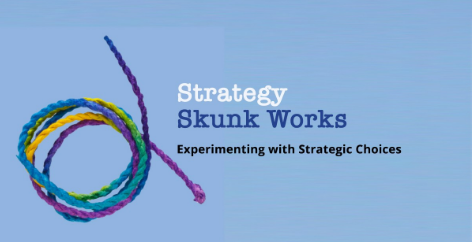In today’s fast-paced environment, project managers often seek methodologies that enhance innovation, flexibility, and team productivity. Two prominent approaches are Agile and the Skunk Works model. While both emphasize creativity and adaptability, they differ significantly in structure and execution. This article explores the benefits and disadvantages of each approach to help project managers make informed decisions.
Agile Approach
Overview: Agile is an iterative project management methodology that emphasizes collaboration, customer feedback, and small, rapid releases. It is commonly used in software development but is applicable across various industries.
Benefits:
- Flexibility and Adaptability: Agile allows teams to respond to changing requirements quickly. For example, if user feedback suggests a feature needs modification, the team can adjust in the next sprint without derailing the project.
- Increased Collaboration: Agile encourages cross-functional teams to work closely together, fostering a culture of communication and teamwork. Daily stand-up meetings keep everyone aligned.
- Continuous Improvement: Regular retrospectives help teams identify areas for improvement, ensuring that processes evolve and become more efficient over time.
- Customer-Centric: Frequent iterations allow for continuous user feedback, leading to products that better meet customer needs and expectations.
Disadvantages:
- Less Predictability: The flexible nature of Agile can lead to challenges in predicting timelines and budgets, making it difficult for project managers to provide accurate forecasts.
- Scope Creep: Continuous changes in requirements may lead to scope creep if not managed properly, potentially stretching resources and timelines.
- Team Dependency: The success of Agile relies heavily on the team's commitment and communication skills. If team dynamics falter, productivity can decline.
Example: A software development team using Agile might break their project into two-week sprints, allowing them to develop features iteratively while incorporating user feedback after each cycle.
Skunk Works Approach
Overview: The Skunk Works model, originally developed by Lockheed Martin, refers to a small, autonomous team that works on innovative projects outside the typical organizational structure. This approach encourages rapid experimentation and prototyping.
Benefits:
- Innovation and Creativity: Skunk Works teams are often given the freedom to explore bold ideas without the constraints of traditional processes, leading to groundbreaking solutions.
- Rapid Prototyping: The emphasis on speed allows for quick development and testing of concepts, helping teams to learn and iterate faster than conventional methods.
- Reduced Bureaucracy: Operating outside of standard organizational hierarchies minimizes red tape, enabling teams to make decisions swiftly.
- Focus on High-Impact Projects: Skunk Works teams often tackle projects deemed too risky or unconventional, potentially leading to significant advancements.
Disadvantages:
- Lack of Oversight: The autonomy of Skunk Works teams can lead to a disconnect from the larger organization, making alignment with company goals challenging.
- Resource Allocation: Isolating a team for a Skunk Works project can strain resources and may not always justify the investment if projects do not yield expected results.
- Scalability Issues: While the Skunk Works model fosters innovation, it may not scale well across larger organizations, where consistent processes are often necessary.
Example: Lockheed Martin’s Skunk Works developed the U-2 and SR-71 Blackbird aircraft with minimal oversight, allowing for rapid advancements in aerospace technology that changed the landscape of reconnaissance.
Conclusion
Both Agile and the Skunk Works approaches offer unique advantages and disadvantages for project managers.
- Agile is ideal for projects requiring flexibility, user feedback, and continuous improvement, making it well-suited for software development and rapidly changing environments.
- Skunk Works is perfect for high-risk, high-reward projects where innovation and speed are paramount, especially when conventional methods may stifle creativity.
Ultimately, the choice between Agile and Skunk Works will depend on the specific needs of the project, the organizational culture, and the desired outcomes. By understanding the strengths and limitations of each approach, project managers can tailor their strategies to foster innovation and ensure project success.
